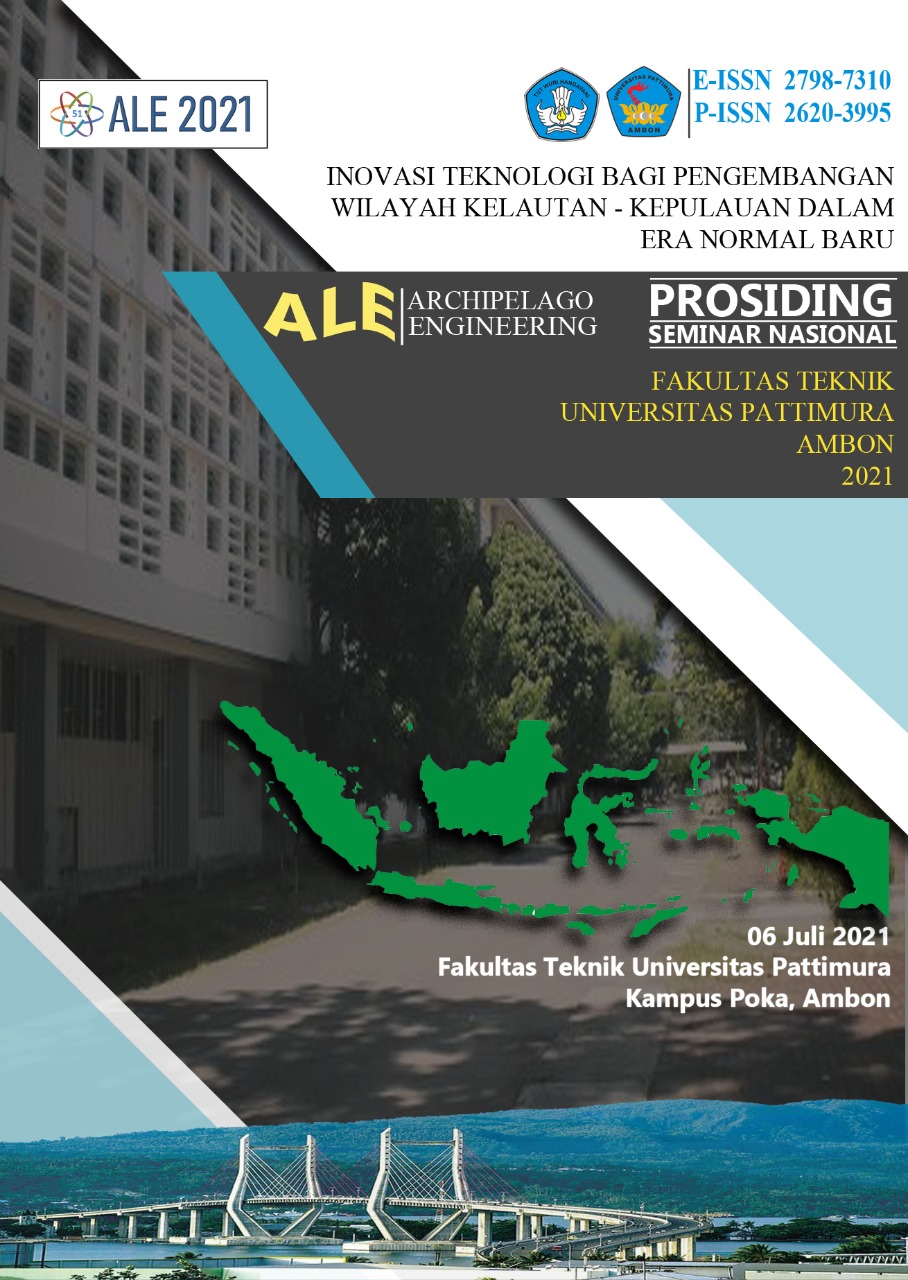ANALISIS SIFAT MEKANIS KOMPOSIT POLYESTER YANG DIPERKUAT SERAT KULIT DURIAN (DURIO ZIBETHINUS MURR) AKIBAT VARIASI FRAKSI VOLUME
Abstract
Durian rind fiber composite as a reinforcement is one of the interesting research areas. Some of the advantages associated with using natural fibers due to reinforcement in polymers are their non-abrasive properties and low-cost consumption. Durian rind when processed further can be made into cellulose fiber which can be used as a natural filler in unsaturated polyester composites. Among various types of natural fibers, durian skin fiber is an alternative polymer composite filler. Durian skin can be obtained easily because it is a family waste that has not been used. To get a new composite material made from durian skin waste, and to help the community and government in handling durian skin waste. The purpose of this study was to determine the maximum value of the variation of the volume fraction of durian skin fiber on the impact strength and hardness strength according to the desired application. This study uses the Hand Lay Up method, in the manufacture of single fiber composites with variations in volume fraction of durian skin fiber: polyester matrix, namely, 10%: 90%, 20%: 80%, 30%: 70%, 40%: 60% and 50 %:50%. The results showed that there was an increase in the impact strength and hardness strength with the addition of the volume fraction, where the highest impact energy for the volume fraction of durian skin fiber was 50%: 50%, 0.7738 J, and the highest impact value was 0.0096725 J/mm² and energy the lowest impact is 10%: 90%, 0.461 J. and the lowest impact price is 0.0057685 J/mm². So it can be concluded that the impact strength and hardness of the durian skin fiber composite increased with the increase in the volume fraction of the fiber.
Downloads
References
[2] Pramuko l Purboputro, 2006, Pengaruh Panjang Serat Terhadap Kekuatan Impak Enceng Gondok dengan Matrikk Polyester MEDIA MESIN, Vol. 7, No. 2, 70– 76
[3] Wahyono, 2009, Karakteristik Edible Film Berbahan Dasar Kulit Durian dan Pati Biji Durian (Durio sp) untuk Pengemasan Buah Strawberry. Skripsi. UMS.
[4] Indra Syahrul Fuad, Bahder Djohan, Midun Saputra (2014), meneliti tentang “Pengaruh penambahan serat kulit durian terhadap kuat tekan dan tarik belah pada mutu beton K-175â€.Jurnal Desiminasi Teknologi, Vol.2 No.1.
[5] Diharjo K, 2006, Pengaruh Perlakuan Alkali terhadap Sifat Tarik Bahan Komposit Serat Rami - Polyester, Jurnal Teknik Mesin Vol. 8, No. 1, Petra Christian University, Jakarta.
[6] H.P.G. Santafe Junior, et.al., 2010. Mechanical Properties of Tensile Tested Coir Fiber Reinforced Polyester Composites. Revista Material.
[7] Majid Ali., 2010. Coconut Fiber – A Versatile Material and is Applications inEngineering, National Engineering
[8] Flach M., 1983. The Sago Palm. FAO Plant Production and Protection, Paper. FAO- Rome:85p.
[9] Jacobs, J.A. Kilduft T.K. 1994. Engineering Material Technology Structure, Processing, Property and Selection 2. Prentice Hall,Inc A Simon Schuster Company, USA.
[10] ASTM. 1997. Mannual book of ASTM standarts. Philadelphia : ASTM
[11] ASTM,. 1998. Annual Book ASTM Standar USA.
[12] ASTM D256-00 ISO 179-1., 2003, Standart Test Method for Tensile Properties of plastic, 47-60
[13] ASTM. D 790 Standard test methods for flexural properties of unreinforced and reinforced plastics and electrical insulating material. Philadelphia, PA : American Society for Testing and Materials.
[14] Budinski Keneth G., 2003. Engineering Material Properties and Selection, Prentice Hall, New Jesey
[15] Callister, W. D. 1991. Material Science and Engineering an Introduction, John Willey and Sons Inc, New York.
[16] Bismarck, A. et al. 2002. Surface Characterization of Flax, Hemp and Cellulose Fiber; Surface Properties anda the Water Uptake Behavior. Journal of Polymer Composite. Vol.23. No.5.
Copyright (c) 2021 Arthur Y. Leiwakabessy, Benjamin G. Tentua, Fany Laamena

This work is licensed under a Creative Commons Attribution-ShareAlike 4.0 International License.
An author who publishes in the ALE Proceeding agrees to the following terms:
- Author retains the copyright and grants ALE Proceeding the right of first publication of the work simultaneously licensed under the Creative Commons Attribution-ShareAlike 4.0 License that allows others to share the work with an acknowledgment of the work's authorship and initial publication in this journal.
- Author is able to enter into separate, additional contractual arrangements for the non-exclusive distribution of the journal's published version of the work (e.g., post it to an institutional repository or publish it in a book) with the acknowledgment of its initial publication in this journal.
- Author is permitted and encouraged to post his/her work online (e.g., in institutional repositories or on their website) prior to and during the submission process, as it can lead to productive exchanges, as well as earlier and greater citation of the published work (See The Effect of Open Access).
Read more about the Creative Commons Attribution-ShareAlike 4.0 Licence here: https://creativecommons.org/licenses/by-sa/4.0/.






